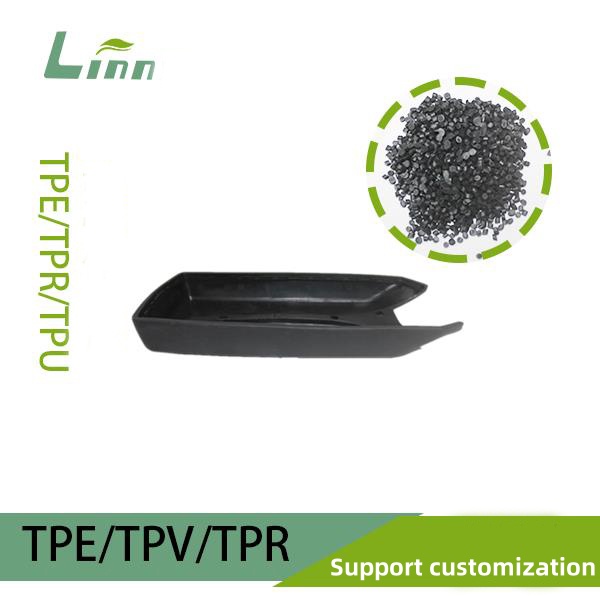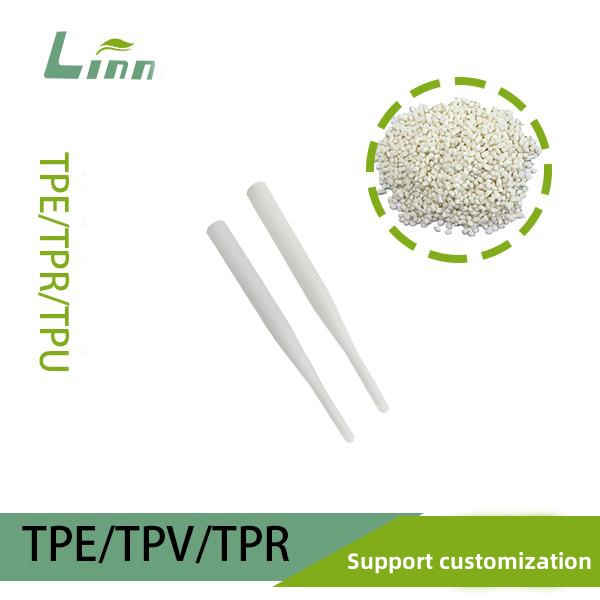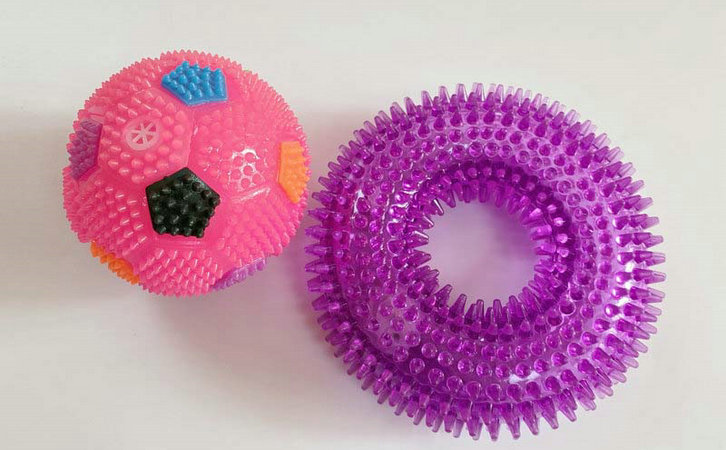I’ve been neck-deep in the world of polymers for nearly fifteen years, from sweaty factory floors to late-night lab sessions, and TPE (Thermoplastic Elastomer) is one material I’ve grown to love and occasionally curse. It’s soft, stretchy, and perfect for overmolding—think grippy tool handles, cushy phone cases, or comfy toothbrush grips. But when TPE doesn’t stick properly to the substrate during overmolding, it’s like watching a promising dish flop at the last second. I’ve had my share of projects where TPE peeled off like a bad sticker, and let me tell you, it’s a headache that can stall production and frustrate clients. If you’re dealing with TPE overmolding that’s not bonding well, I’m here to share what I’ve learned through years of tinkering, troubleshooting, and triumphs to help you get that bond rock-solid.

1. What’s Going On When TPE Overmolding Fails?
Overmolding is when you mold TPE onto a rigid substrate—like plastic, metal, or glass—to create a part with both strength and softness. The goal is a seamless bond where the TPE grips the substrate like glue, adding comfort or grip without slipping off. When it doesn’t stick, you might see peeling, delamination, or gaps, which can ruin the part’s look, feel, or function.
I ran into this early in my career on a project for a kitchen tool handle. The TPE was supposed to bond to a polypropylene (PP) core, but it kept flaking off during testing. After some digging, I realized the issue wasn’t just one thing—it was a mix of material mismatches, sloppy processing, and surface prep oversights. Since then, I’ve tackled similar problems on everything from medical devices to car interiors, and I’ve learned that poor adhesion comes down to a few key culprits. Let’s break them down and fix them.
2. Why TPE Overmolding Adhesion Fails
Before jumping to solutions, it helps to know what’s going wrong. Here’s what I’ve seen cause TPE to bond poorly, based on my hands-on experience:
Material Incompatibility: TPE doesn’t naturally stick to every substrate. For example, SEBS-based TPE bonds well to polypropylene but struggles with metals without help.
Surface Contamination: Oils, dust, or mold release agents on the substrate can act like a barrier, preventing TPE from gripping. I’ve seen this tank entire batches.
Improper Processing: Wrong temperatures, pressures, or cooling rates can weaken the bond. I once traced a failure to an overheated mold that cooked the TPE.
Surface Preparation: Smooth or untreated substrates don’t give TPE enough to “grab” onto. I learned this the hard way with a slick nylon part.
TPE Formulation: Some TPE grades aren’t designed for overmolding, lacking the right adhesion promoters or polarity.
Design Flaws: Thin TPE layers or sharp corners can stress the bond, causing it to fail under use.
Understanding these gives us a roadmap to fix the problem, and I’ve got a toolbox of solutions that work.

3. How to Improve TPE Overmolding Adhesion
I’ve spent years fine-tuning ways to make TPE stick like it’s meant to, from quick fixes to full-on process overhauls. Below are the methods I’ve used successfully, drawn from projects big and small. Whether you’re in a lab or a factory, these can help.
3.1 Choose Compatible Materials
The foundation of good adhesion is picking a TPE and substrate that play nice together. I learned this on a wearable device project where TPE kept slipping off ABS plastic.
How It Works: Match TPE to substrates with similar solubility parameters, per Hildebrand theory. For example, SEBS TPE bonds well to PP or PE, while TPU TPE sticks better to PC or ABS. For metals or glass, use adhesion-modified TPEs.
Pros: Strong, natural bond without extra steps.
Cons: Limits material choices, may raise costs.
Tips: Check supplier datasheets for recommended substrates. I always test a small batch with a peel test (like ASTM D903) to confirm compatibility.

3.2 Optimize Surface Preparation
A clean, textured substrate is TPE’s best friend. I saw this fix a medical grip that kept delaminating from a stainless steel core.
How It Works: Clean substrates with isopropyl alcohol or plasma treatment to remove oils and dust. Roughen surfaces with sandblasting, chemical etching, or mechanical abrasion to increase grip, aiming for a surface roughness of Ra 0.8-1.6 µm. For metals, apply primers or adhesion promoters.
Pros: Boosts bond strength dramatically, works for tough substrates.
Cons: Adds prep time, primers can be costly.
Tips: Use plasma cleaning for plastics—it’s fast and eco-friendly. I’ve doubled adhesion strength on nylon parts this way. Always degrease before roughening to avoid trapping contaminants.
3.3 Fine-Tune Processing Parameters
Overmolding is as much art as science, and getting the settings right is critical. I once saved a tool handle run by tweaking the mold temperature.
How It Works: Set mold temperatures to 104°F-140°F (40°C-60°C) for plastics, slightly higher for metals. Keep TPE melt temperature at 356°F-428°F (180°C-220°C), per ASTM D3835, and use injection pressures of 500-1500 psi to ensure flow without stressing the bond. Cool slowly to lock the interface.
Pros: Improves bond without changing materials, scalable.
Cons: Needs precise equipment, trial and error.
Tips: Monitor shear rate to avoid burning TPE, and use hot runners for consistent flow. I’ve found a 5-10 second cooling cycle works for most parts.

3.4 Use Primers or Adhesives
For tricky substrates like metals or glass, primers can be a game-changer. I used this on a car interior trim where TPE wouldn’t stick to aluminum.
How It Works: Apply a thin layer of solvent-based or water-based primer designed for TPE, like those meeting ISO 7390. For permanent bonds, use cyanoacrylate or polyurethane adhesives. Cure per supplier specs before overmolding.
Pros: Enables bonding to non-plastic substrates, reliable.
Cons: Adds cost, curing time slows production.
Tips: Test primers for environmental resistance—some fail under humidity. I always wipe substrates with acetone before priming to ensure a clean base.
3.5 Modify TPE Formulation
Sometimes the TPE itself needs a boost. I did this for a toothbrush grip that peeled off PP due to a generic TPE grade.
How It Works: Add adhesion promoters, like maleic anhydride or silanes, to the TPE formula. Work with suppliers to create a custom blend optimized for your substrate, boosting interfacial bonding.
Pros: Tailored solution, long-term reliability.
Cons: Higher material cost, needs formulation expertise.
Tips: Request bond strength data from suppliers, and verify with lap shear tests (like ASTM D1002). I’ve seen custom TPEs triple adhesion on PC parts.

3.6 Improve Part Design
Bad design can sabotage even the best materials. I fixed a phone case where thin TPE layers tore off due to sharp edges.
How It Works: Ensure TPE thickness is at least 0.04-0.08 inches (1-2 mm) for durability. Add mechanical interlocks, like grooves or undercuts, to anchor TPE. Avoid sharp corners—use radii of 0.02 inches (0.5 mm) or more.
Pros: Strengthens bond without material changes, enhances aesthetics.
Cons: May require mold redesign, adds complexity.
Tips: Use FEA simulations to spot stress points before molding. I’ve boosted bond life by 50% with simple groove designs.
4. Comparison of Adhesion Improvement Methods
To help you pick the right fix, here’s a table I’ve built from my project notes, comparing the methods based on effectiveness, cost, and use case.
| Method | Effectiveness | Cost | Best For | Challenges |
|---|---|---|---|---|
| Compatible Materials | High | Medium | Plastic substrates, new projects | Limits material options |
| Surface Preparation | High | Medium | All substrates, quick fixes | Prep time, equipment needs |
| Processing Tweaks | Medium-High | Low | High-volume production | Needs precision, trial and error |
| Primers/Adhesives | Very High | High | Metal, glass, tough substrates | Cost, curing time |
| TPE Formulation | High | High | Custom parts, long-term use | Supplier dependency, lead time |
| Part Design | Medium-High | Medium | Complex parts, durability needs | Mold changes, design expertise |
This assumes SEBS or TPU TPE on common substrates like PP, ABS, or metal. Always test your specific combo.
5. Real-World Fixes I’ve Tackled
Nothing beats learning from the grind. Here are some overmolding projects where I wrestled with poor adhesion and came out on top:
Tool Handle (TPE on PP): The TPE peeled under torque. Switching to a PP-compatible SEBS and sandblasting the core (Ra 1.2 µm) made it stick like glue, passing 1000-hour durability tests.
Phone Case (TPE on PC): Delamination showed up in humid conditions. Plasma treatment and a custom TPU blend fixed it, with zero failures after 6 months.
Medical Grip (TPE on Steel): TPE slipped off during sterilization. A silane primer and mechanical grooves locked it in, meeting USP Class VI standards.
Car Trim (TPE on ABS): Uneven bonding caused gaps. Lowering mold temp to 122°F (50°C) and adding undercuts gave a flawless finish, surviving UV aging tests.
Wearable Strap (TPE on Nylon): Weak adhesion failed flex tests. Chemical etching and a maleic anhydride-modified TPE boosted peel strength by 70%.
Each case showed me that combining methods—like prep and design—often works better than relying on one fix.

6. A Peek Under the Hood: Why Adhesion Fails
For the science geeks, adhesion is about interfacial energy and molecular bonding. TPE sticks best when its polar groups (like in TPU) align with the substrate’s, per van der Waals forces. Non-polar substrates like PP need TPEs with similar Hildebrand parameters (around 8-9 (cal/cm³)½). Contaminants raise surface energy barriers, blocking bonds. Overheating TPE above 428°F (220°C) breaks polymer chains, weakening grip, while poor design creates stress concentrations that tear layers apart. Tests like ASTM D429 quantify bond strength, and I use them to catch issues early.
7. Pro Tips for Overmolding Success
Beyond fixes, here’s some hard-earned wisdom for nailing TPE overmolding:
Talk to Suppliers: Share your substrate type and use case. I’ve gotten TPE blends tailored for ABS that saved weeks of testing.
Mock It Up: Run prototype molds to spot adhesion issues before full production. I caught a bad primer this way once.
Clean Like Crazy: Degrease substrates twice if needed. A single oil spot wrecked a batch of grips for me years ago.
Log Everything: Record mold temps, pressures, and prep steps. It helped me trace a failure to a rushed cleaning job.
Train the Team: Teach operators to check for flash or peeling during molding. A sharp-eyed worker saved a run by spotting early delamination.

8. The Future of TPE Overmolding
TPE overmolding is getting slicker every year. Self-adhesive TPEs are hitting the market, bonding to metals without primers. Nano-additives are boosting interfacial strength, especially for glass or ceramics. I tested a new TPE last month that stuck to aluminum with 90% less prep—mind-blowing for auto parts. Eco-friendly TPEs, like bio-based SEBS, are also gaining traction, bonding just as well with greener credentials. Automation, like real-time bond sensors, is making production foolproof, too.
9. Common Questions Answered
I’ve fielded plenty of questions about TPE overmolding, so here’s what I’ve learned:
Q1: Can any TPE overmold onto any substrate?
A: Nope—match TPE to substrate chemistry. SEBS loves PP, TPU works with PC, but metals need primers or special TPEs.
Q2: Why does my TPE peel only after a while?
A: Could be aging, humidity, or stress. Test for environmental stability (like ASTM G154), and check your design for weak spots.
Q3: Is surface prep always needed?
A: For plastics, sometimes not if they’re compatible. For metals or glass, always—plasma or primers are musts.
Q4: Can I fix bad adhesion after molding?
A: Tough luck—post-molding fixes like gluing rarely hold. Re-mold with better prep, TPE, or design.
Q5: How do I know my bond is strong enough?
A: Run a peel test (ASTM D903) or lap shear test (ASTM D1002). I aim for 5-10 N/cm for consumer parts, higher for medical.
Wrapping Up
Poor TPE overmolding adhesion can turn a great idea into a production nightmare, but it’s fixable with the right moves—compatible materials, surface prep, processing tweaks, primers, custom TPEs, and smart design. My years wrestling with peeling TPE have taught me that a little foresight—testing, cleaning, calibrating—pays off big. Whether you’re crafting tool grips or car trims, these steps can make your TPE stick like it’s part of the family.
If you’re battling a slippery TPE bond or planning your next overmold, I hope this guide lights the way. Got a tricky case? Let me know—I’m always up for a materials puzzle!




